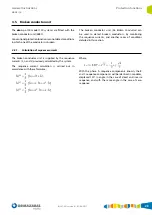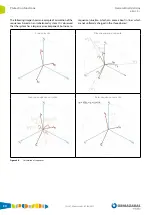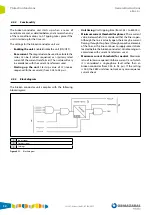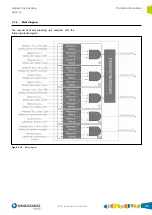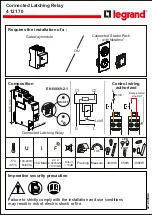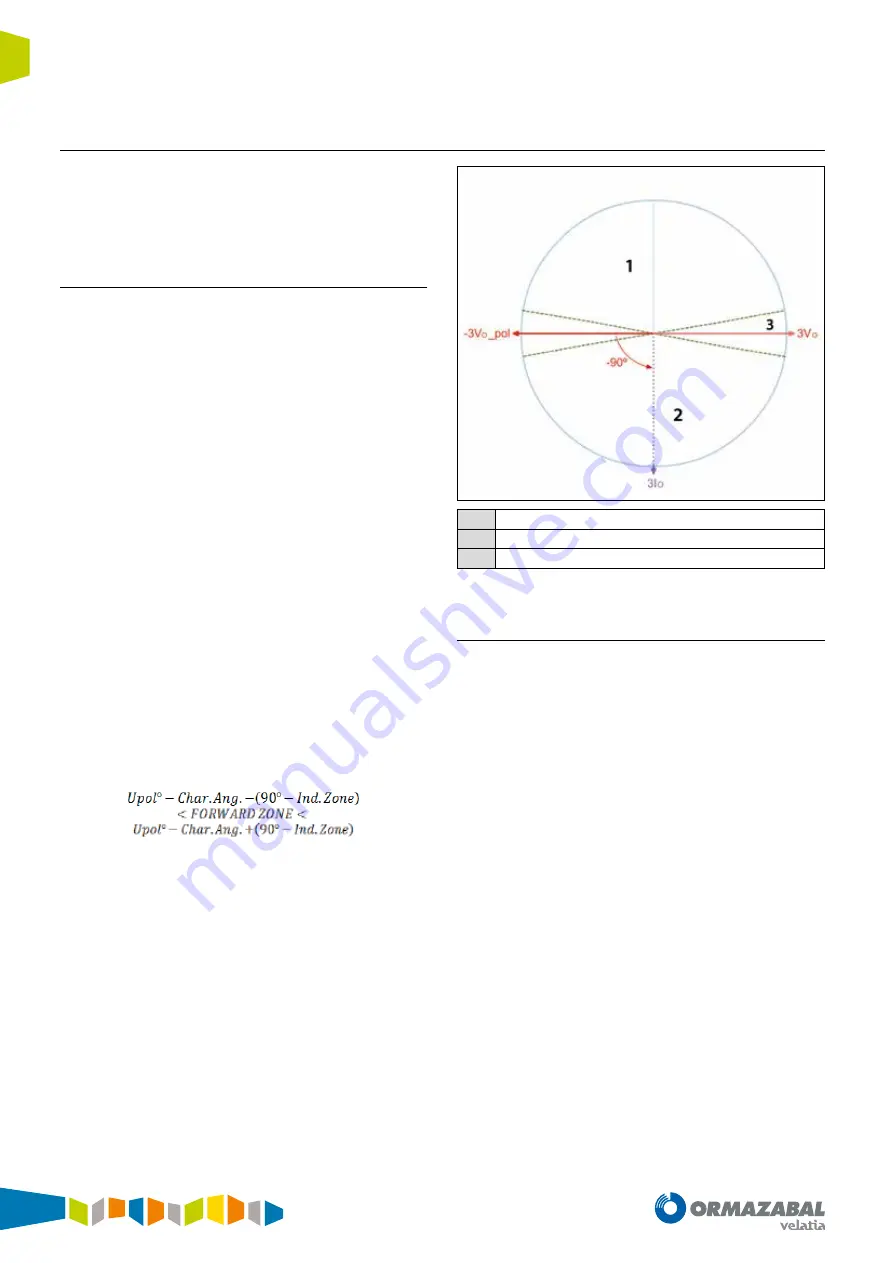
IG-267-EN versión 01; 07/04/2017
24
Protection functions
General Instructions
ekor
.rpa
4.3.2. Neutral and sensitive neutral directional units
The neutral and sensitive neutral directional units include
two different criteria to determine direction: Directional
criterion and wattmetric criterion. The criterion is selected
through a setting in the unit itself.
Angular criterion
The angular criterion of the neutral and sensitive neutral
directional units is based on the phase difference between
the polarisation signal (-3V
o
) and the residual current signal
(3I
o
).
The polarisation signal used is the 180° out-of-phase
residual voltage, i.e.- 3V
o
.
The settings for the neutral and sensitive neutral directional
unit, which apply to the angular criteria, are:
•
Characteristic neutral angle
: Characteristic angle (from
- 90.0° to 90.0°). In distributions with earthed neutral,
this often corresponds to the earth impedance angle.
•
Minimum neutral voltage
: Minimum polarisation
voltage (from 0.5 kV to 72.0 kV). Polarisation voltage
value as of which the directional unit considers the
angle reliable, and is capable of determining a direction.
•
Indeterminate zone
: Indeterminate zone angle (from
0.0° to 90.0°). Setting to establish the indetermination
zone which is close to the zero torque line.
The direction indicated by the units can be
Forward
,
Reverse
or
ndef
(undefined).
The
Forward
direction zone is delimited by the following
formula:
The
Reverse
direction zone will be the opposite of the
Forward
zone. In other words, the above formula needs to
be turned around 180° in order to achieve the expression
which delimits the
Reverse
direction zone.
The directional units will indicate
ndef
direction if in the
indeterminate zone or polarisation voltage is below the V
min
setting.
The figure below shows an example of operation for the
neutral directional unit:
1
Reserve
2
Forward
3
Indeterminate zone
Figure 4.4.
Neutral directional unit
Wattmetric criterion
The wattmetric criterion of the neutral and sensitive neutral
directional units is based on the phase difference between
the polarisation signal (- 3V
o
) and the residual current signal
(3l
o
), along with the magnitude of the residual active power.
The settings for the neutral and sensitive neutral directional
unit, which apply to the wattmetric criteria, are:
•
Minimum neutral active power
: Minimum residual
active power. Minimum residual active power value (in
absolute value), as of which direction other than
ndef
(i.e.
Forward
or
Reverse
) can be considered. Variable
ranges in accordance with current transformers used.
•
Minimum neutral voltage
: Minimum polarisation
voltage (from 0.5 kV to 72.0 kV). Polarisation voltage
value as of which the directional unit considers the
angle reliable, and is capable of determining a direction.
•
Indeterminate zone
: Indeterminate zone angle (from
0.0° to 90.0°). Angle formed by the 90° axis and the line
which delimits the indeterminate zone.
The direction indicated by the units can be
Forward
,
Reverse
or
ndef
(undefined).
Summary of Contents for ekor.rpa Series
Page 115: ......




















